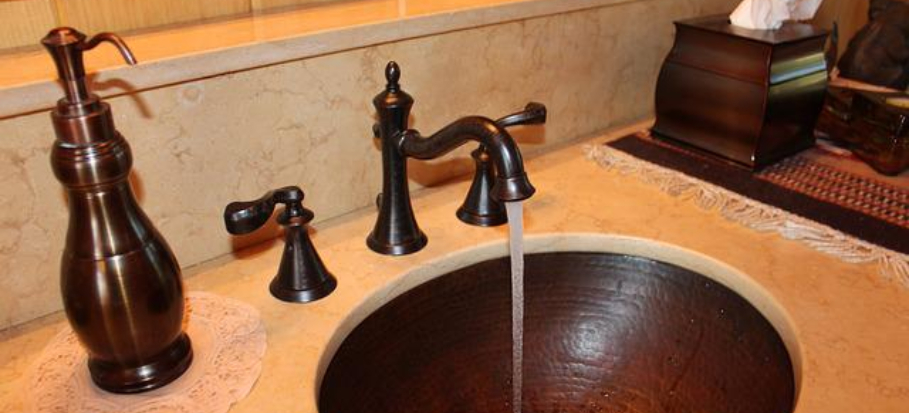Proven Ways to Handle Plumbing Issues in Older Homes
Proven Ways to Handle Plumbing Issues in Older Homes
Blog Article
On this page on the next paragraphs you can discover a good deal of very good content on the subject of Main Plumbing Issues Found in Old Houses.

Older homes often come with beauty, personality, and history, but they can also bring a host of pipes concerns. Whether you're managing maturing pipelines, low tide pressure, or leaks, knowing just how to resolve these typical problems is vital to preserving a safe and practical home. In this overview, we'll explore the regular plumbing difficulties encountered by older homes and offer functional solutions to maintain your pipes in leading shape.
Recognizing Typical Pipes Concerns
Aging Pipelines
One of one of the most typical concerns in older homes is aging pipelines. Relying on the era in which your home was constructed, the pipes may be made from products that have degraded gradually, such as galvanized steel, cast iron, or even lead. These products can corrode, come to be fragile, or develop leakages, causing water damage and potential health hazards.
Water High Quality Testing
Older pipelines can influence the high quality of your water. Conduct a water top quality examination to check for pollutants such as lead, rust, or various other impurities that might be introduced by maturing pipes.
Solutions for Common Plumbing Problems
Replacing Aging Pipes
If your home has old, wearing away pipes, take into consideration replacing them with modern-day materials like copper or PEX. This can be a considerable financial investment, but it will prevent future concerns and enhance the security and dependability of your pipes system.
Fixing Low Water Pressure
To repair low tide stress, begin by cleaning or replacing old fixtures and getting rid of mineral buildup in the pipelines. If the issue lingers, it may be necessary to replace sections of corroded pipes.
Fixing and Changing Leaking Pipes
For tiny leaks, you can utilize pipe clamps or epoxy putty as a momentary solution. Nonetheless, it's ideal to change dripping pipelines totally to avoid further damage.
Updating Components
Updating old components to contemporary, water-efficient versions can enhance your home's pipes performance and decrease water consumption. Search for fixtures with the WaterSense label for the best efficiency.
Dealing with Pipeline Deterioration
If your pipelines are rusted, replacing them with corrosion-resistant products like copper, PVC, or PEX is the very best service. Regular inspections and water quality upkeep can assist avoid additionally rust.
Low Water Stress
If you're experiencing low tide pressure, it could be as a result of natural resources, deterioration inside the pipes, or old fixtures that are no more working effectively. This can be a major aggravation, especially in areas like showers and sinks.
Leaking Pipelines
Leakages are one more regular issue in older homes, commonly triggered by corroded or damaged pipes. Also little leaks can lead to substantial water damage, mold development, and enhanced water costs otherwise addressed promptly.
Obsolete Fixtures
Obsolete plumbing components such as faucets, toilets, and showerheads not just look old yet may likewise be much less effective, vulnerable to leaks, or incompatible with modern-day plumbing standards.
Pipe Rust
Deterioration is a common issue in older pipes, especially those made from galvanized steel or cast iron. Rusty pipelines can restrict water flow, create discoloration, and ultimately lead to leaks or pipeline bursts.
Examining the Condition of Your Pipes
Examining Noticeable Pipes
Begin by evaluating any noticeable pipes in your house, such as those in cellars, crawl spaces, or under sinks. Search for indicators of corrosion, leaks, or corrosion, which can indicate underlying concerns.
Looking for Leaks
Check for leakages by inspecting areas around taps, commodes, and under sinks. You can also monitor your water meter prior to and after a duration of no water make use of to discover surprise leaks.
When to Call an Expert
While some pipes issues can be handled with DIY options, there are times when it's ideal to hire a specialist. If you're handling major leakages, considerable corrosion, or are uncertain regarding the problem of your pipelines, a licensed plumbing technician can give expert assessment and repair work.
Preventive Maintenance Tips
Regular Inspections
On a regular basis check your pipes system for indicators of wear and tear. Capturing issues early can prevent costly repair work down the line.
Water Pressure Policy
Ensure your water pressure is within the advised array to stay clear of emphasizing your pipelines and components. A plumber can install a pressure regulator if needed.
Water Quality Upkeep
Mount water filters or conditioners if your water top quality is poor. This can secure your pipelines and components from damages triggered by difficult water or pollutants.
Proactive Pipe Substitute
If your home has very old pipelines, take into consideration aggressive substitute before major concerns emerge. This can conserve you from emergency situation fixings and water damage.
Verdict
Dealing with plumbing problems in older homes needs a combination of vigilance, preventative upkeep, and timely upgrades. By understanding the common challenges and knowing when to look for expert help, you can guarantee your pipes system remains functional and dependable for years ahead.
Common Plumbing Issues in Older Homes and How to Fix Them
Owning an older home in Australia comes with its unique charm and a set of challenges, especially when it comes to plumbing. The Sunshine Coast has many older properties that can harbour plumbing problems that aren t just inconvenient but potentially costly. Here s a look at some common plumbing issues in older homes and expert advice on how to handle them.
Outdated Piping Materials
Many older homes were built with galvanised steel, cast iron, or even lead pipes, materials that are far from ideal by today s standards. Galvanised pipes are prone to corrosion and clogging, while lead pipes pose serious health risks.
How to Fix:
Replacing old pipes is a job for a professional. Upgrading to copper or PVC piping not only enhances water quality and flow but also increases the property s safety and value. If you suspect your home has outdated materials, a licensed plumber can conduct a thorough inspection and recommend the best course of action.
Corrosion and Pipe Degradation
Over time, exposure to water and minerals can cause pipes to corrode, leading to leaks, bursts, and water contamination. Corrosion is especially common in homes over 50 years old.
How to Fix:
Regular inspections can catch early signs of corrosion. If corrosion is found, the affected section of piping often needs to be replaced. For homes with extensive corrosion, a complete plumbing overhaul might be necessary. It s crucial to consult with a plumbing expert to understand the extent of the issue.
Tree Root Intrusion
Older neighbourhoods usually have mature trees whose roots can intrude into pipe lines, causing blockages or damage. This is particularly problematic for sewer lines, where roots seek out water sources.
How to Fix:
A plumber can use a specialised camera to inspect sewer lines for root intrusion. If roots are a problem, methods like root cutting or hydro-jetting can clear the obstruction. In severe cases, part of the pipe may need replacing. Consider root barriers around the piping to prevent future issues.
Inadequate Water Pressure
Low water pressure in older homes can be due to various factors, including corroded water lines, sediment build-up in pipes, or outdated fixtures.
How to Fix:
First, check if the low pressure is isolated to one area or throughout the house. Replacing old fixtures can sometimes resolve the issue. However, if the problem is more widespread, it might be due to sediment or corrosion. Flushing the system or replacing the affected pipes usually restores normal pressure. Again, a professional assessment is advisable.
Outdated Fixtures
Older homes often feature fixtures that are not only visually dated but functionally inefficient. This includes everything from toilets and taps to showerheads and washing machine hoses.
How to Fix:
Updating these fixtures can improve both water efficiency and the aesthetic appeal of your home. Modern fixtures are designed to conserve water, which can significantly reduce your water bill and lessen your environmental impact.
Conclusion
Maintaining the plumbing in an older home requires a proactive approach. Regular checks and updates are key to preserving these beautiful properties. If you re facing plumbing issues in your older home, it s best to call on experienced professionals like Green & Gold Plumbing & Gas. With the right expertise, even the most daunting plumbing problems can be resolved, ensuring that your home s character is maintained while its functionality is enhanced.
https://gandgplumbing.com.au/common-plumbing-issues-in-older-homes-and-how-to-fix-them/

Hopefully you enjoyed reading our part about Main Plumbing Issues Found in Old Houses. Thanks so much for taking time to read our article post. Do you know about somebody who is occupied with Main Plumbing Issues Found in Old Houses? Feel free to promote it. We thank you for your readership.
Call Today Report this page